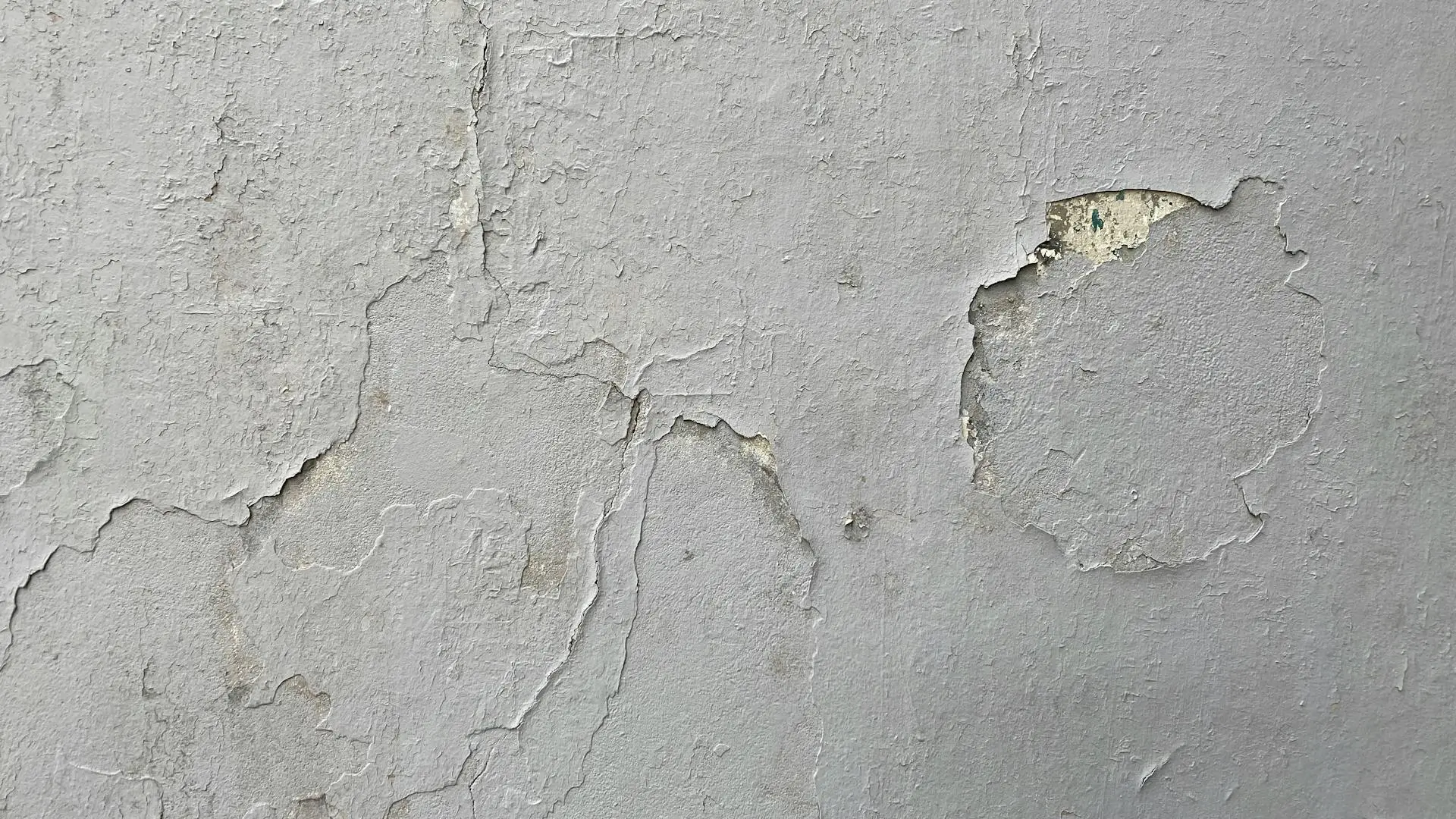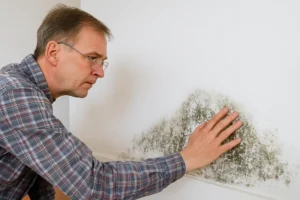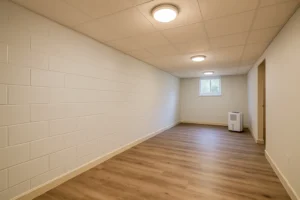Why Moisture Inside Walls Is So Dangerous
Walls are more than just vertical surfaces, they contain insulation, wooden studs, wiring, plumbing, and air spaces. When water finds its way in, it can spread silently and remain undetected for days or even weeks. Unlike standing water on the floor, moisture inside walls is much harder to detect without professional tools.
Common Sources of Moisture in Walls
Moisture can enter walls from various sources, including leaky plumbing, roof leaks, foundation cracks, flooding, poor ventilation, and condensation. These often unnoticed sources can create a damp environment within walls, leading to numerous issues.
For instance, mold thrives in these conditions and can begin to grow within just 24 to 48 hours. Although it may be easy to overlook, dampness in walls can have serious consequences for both the structure of a home and the health of its occupants. Therefore, it is crucial to address any signs of moisture intrusion promptly.
The Threat of Hidden Mold Growth
If water gets trapped inside your walls, it creates an ideal environment for mold, especially behind drywall, inside insulation, and around wood framing. Mold can begin growing in as little as 24 to 48 hours after moisture intrusion.
Where Mold Hides
Mold can thrive in various concealed spaces within your home, posing significant health risks if left unchecked. These hidden areas include:
Behind Walls and Coverings
Mold can flourish on the backside of drywall, beneath wallpaper or paneling, and around plumbing pipes hidden within walls.
Furniture and Exterior Walls
Furniture placed against exterior walls can trap moisture and create a breeding ground for mold.
Ceiling and Insulation
Damp areas in ceilings, insulation, and ceiling tiles can harbor mold growth.
HVAC Systems
The dark and damp environment inside HVAC ductwork can support mold colonies.
Roof and Leaks
Previous roof leaks can lead to mold growth in roof materials.
It is important to keep in mind that disturbing moldy areas, like peeling back wallpaper, can release large amounts of spores into the air, worsening indoor air quality and health risks. That’s why investigating these areas should always be done with caution or by a professional.
Health Risks from Hidden Mold
Mold exposure isn’t just a nuisance; it can affect your health, especially for those with allergies, asthma, or compromised immune systems.
Health Effects
Respiratory Irritation
Inhaled mold spores can trigger sneezing, coughing, wheezing, or shortness of breath.
Allergic Reactions
Common symptoms include itchy eyes, runny nose, sore throat, and sinus congestion.
Skin & Eye Irritation
Direct contact can lead to redness, rashes, and discomfort.
Asthma Attacks
For individuals with asthma, exposure can lead to severe flare-ups or worsening symptoms.
Serious Conditions
Certain molds like Aspergillus can lead to aspergillosis—a range of respiratory conditions, including allergic reactions, sinus infections, and fungal balls in the lungs.
Inflammatory Reactions
Mold and bacteria can also cause hypersensitivity pneumonitis, sinusitis, and fatigue due to chronic exposure.

How Mold Damages Your Home
Mold digests organic materials to survive, meaning it eats away at the building materials within your walls. Over time, this leads to:
- Crumbling drywall
- Rotting wood framing
- Weakened structural integrity
- Foul odors
- Permanent stains or discoloration
Unchecked, the damage can result in costly repairs and may even lower your home’s market value.
Can I Just Let It Dry Out on Its Own?
Unfortunately, no. While surface-level water might evaporate with time and airflow, moisture trapped inside walls, insulation, or behind fixtures can linger for weeks, even if everything looks dry on the outside.
Mold doesn’t need standing water to thrive, it just needs enough humidity and a suitable material like drywall or wood. By the time you see or smell mold, it’s already well-established.
The Importance of Professional Restoration
- Locate hidden water using advanced tools
- Remove and dry materials to prevent mold
- Apply anti-microbial treatments
- Repair and restore damaged walls
- Document damage for insurance claims
Speaking of Insurance…
Most homeowner insurance policies do cover water damage, especially when caused by sudden and accidental events like a burst pipe. However, waiting too long to address water damage or allowing mold to develop can jeopardize your coverage.
Act fast, document everything, and call professionals right away to increase your chances of a smooth claims process.
The Bottom Line: Don’t Ignore the Walls
Water damage behind your walls is a silent threat. It can start small and grow into a major hazard, damaging your home and putting your health at risk. If you suspect hidden moisture or mold, don’t wait until it’s visible. Trust your instincts and call in the experts.
Call Tradewinds Restoration
If your home has experienced water damage, no matter how minor, it’s critical to have it inspected by trained professionals. At Tradewinds Restoration, we specialize in detecting and eliminating hidden moisture to protect your home and your family.
📞 Contact us today for a thorough evaluation and get peace of mind knowing your home is safe, sound, and mold-free.





